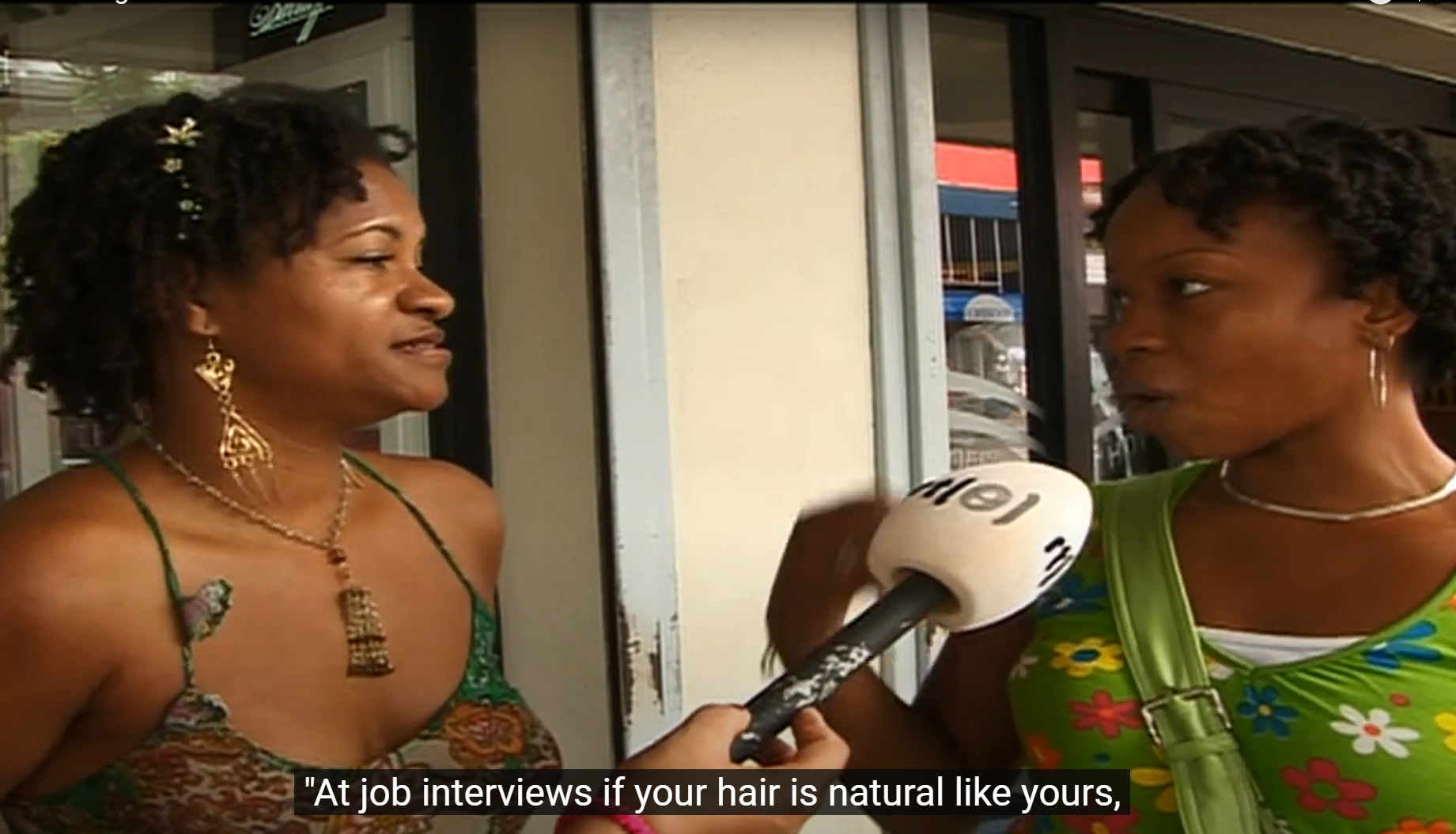One of the highlights from the past few years was definitely the feature about natural hair on RTL Nieuws, a national TV station in the Netherlands. My book, Kroeshaar, Wat je Moet Weten en Meer, the first ever book about African hair in Dutch clearly started a revolution together with my website kroeshaar.com and people wanted to know more. I was in Suriname for the Sabi Wiri Dei 2006 when Nina Jurna, an international correspondent from RTL Nieuws, approached me to create a feature about natural hair.
The packed house at Sabi Wiri Dei piqued the journalist's interest, but Nina also seemed to have her own experience with the concept of "good and bad hair." Whether it came from her personal experiences or from raising her daughter, I wasn't entirely sure. Nina herself has fairly straight hair with some waves and a slight curl, but her daughter had a beautiful head of natural kinky hair. It turned out to be a fun and insightful feature.
Mireille Liong Interview on RTL: Natural Hair on TV
With Nina Jurna
We went out into the city to interview people about their hair—visiting salons and talking to people on the streets. What I find interesting now, looking back, is that Sharda Moira Johnn, who is currently making waves as an international model with her natural hair, makes a brief appearance in the footage with her hair styled in twists. At that time, I didn’t know her yet.
The feature aired on March 12, 2006. Since then, a lot has changed. Now, I’m curious—what do you think about the segment when you watch it today? Do you think a lot has changed since then?
Relaxers, straighteners, hot irons, wet or dry curls—women in Suriname use all sorts of methods to make their natural hair as sleek and straight as possible. Straight hair is still the beauty ideal in Suriname, although not everyone agrees.
A walk through Paramaribo will show you the most beautiful and creative hairstyles—braids, curls, dreadlocks, straight hair. Surinamese people believe that without beautiful hair, life has no meaning.
"I have a different hairstyle now, and soon I'll have another one, so I’m always busy with my hair."
At salons, people spend an average of 20 euros a week on their hair. With monthly salaries of just 200 euros, that’s quite a significant amount. Among Creole women, straightening and relaxing are especially popular. Natural kinky hair is chemically treated and heat-straightened. Strong natural hair is generally considered unattractive and unprofessional in the workplace.
"I went to two job interviews, and they always complained about my hair, saying, 'Why does your hair always look so bad?' If you have long, curly hair, they keep complaining, and as a result, you don't get the job."
U.S.-based natural hair activist and author Mireille Liong-A-Kong is outraged by this aversion to natural hair.
"Can I touch your hair? Yes, those are real curls—this is natural hair!"
She believes that the fact that chemical hair products sell like hotcakes in Suriname stems from colonial times, when many Surinamese people aspired to straight hair.
"It has everything to do with today’s representation in the media. All the advertisements show women with long, flowing hair. That's beautiful hair, but it's not the only beautiful hair. Natural hair is also very beautiful, and people need to see that."
Nina on the couch with her daughter then says
"I have mixed hair myself—a bit curly, a bit kinky—but my daughter Leila's hair is much kinkier. Even small children are taught that this hair isn’t beautiful. Some people will even say that Leila's hair is 'wrong' or even 'bad.'"
Click to come to my current exhibition BAD Hair Uprooted where I ask non-Black individuals if they would alther their hair for a job.





